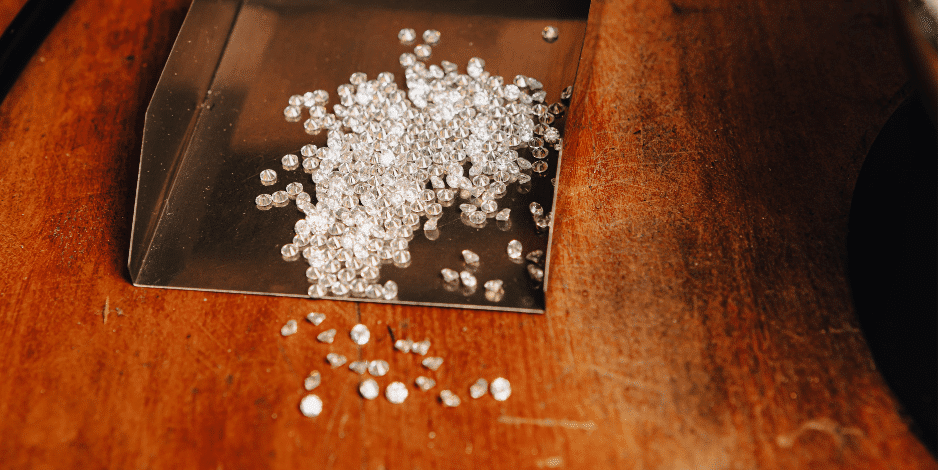
October 18, 2021
What’s believed to be the world’s 3rd largest naturally formed diamond in the world, a stone weighing 1,098 carats has been discovered in the diamond hotspot of Botswana.
The diamond was unearthed on the 1st of June 2021 and presented to the President of Botswana, Mokgweetsi Masisi by diamond firm Debswana. Acting managing director, Lynette Armstrong, notes that the rare and exquisite stone ‘means so much in the context of diamonds and Botswana’.
To celebrate the rare discovery, we wanted to explore the incredible process of diamonds forming naturally and cover a few of the differences and nuances that come with them.
Made up mostly of carbon and growing around 90-100 miles below the earth’s surface, diamonds form naturally as molecules are placed under extreme amounts of heat and pressure before beginning to surface through volcanic eruptions.
Therefore, the areas and locations that diamonds form tend to be hotspots that produce the highest amount and quality of diamonds in the world, one of these being Botswana.
Something that is particularly interesting about the Botswana diamond is that it was found beside several smaller similar diamonds indicating it was originally much bigger at approximately 2,000 carats when it first formed.
However rare, large, and precious the diamond found in Botswana may be, there are two other diamonds we’ve found previously which are greater. The Cullinan diamond (3,106 carats) and the Lesedi La Rona (1,109 carats).
The ‘Star of Africa’, the Cullinan diamond was discovered in 1905 in Pretoria, South Africa, and is the largest diamond ever found to date, famously being incorporated into the Crown Jewels and being housed within the Tower of London in the British Sovereign’s Royal Scepter.
The Lesedi la Rona diamond was also discovered in Botswana in 2015 and while not as big as the Cullinan, the diamond’s composition means it has the potential to be the world’s top-quality diamond once cut and polished.
With Botswana producing two of the three biggest diamonds ever found, it’s no surprise that the country is a hotspot, however, something that may come as a surprise is the country that has the largest amounts of diamonds in the world; Russia.
Russia is said to have the richest supply of natural diamonds with over 12 open-pit mines, with reserves totaling over 650 million carats, towering above the 310 million carats held by Botswana.
Recently, a bizarre double diamond was discovered in Siberia, Russia, which is the first of its kind and best described as a diamond within a diamond, even being coined the ‘Russian Nesting Doll Diamond’.
While the process of diamonds forming is fascinating, these mostly exhibit little or no colouring, another element that makes these gems even more incredible is when secondary geological, elemental or radiation-based factors cause these diamonds to form a colour.
From natural brown and olive to vivid red, blue and green, these coloured diamonds are exceptionally beautiful and the way they form is equally as interesting, with factors like the presence of Boron, Nitrogen and Hydrogen.
Read up on our latest blog, Beauty Crafted in Nature, for more about the process of coloured diamonds forming and the vast range of different colours that diamonds can become.
Discover the beautiful collection of diamond jewellery from Charles Nobel, whether you’re looking for Rings, Necklaces, Earrings, Pendants or more, there’s a piece of diamond jewellery that’s perfect for you or a gift for someone special.